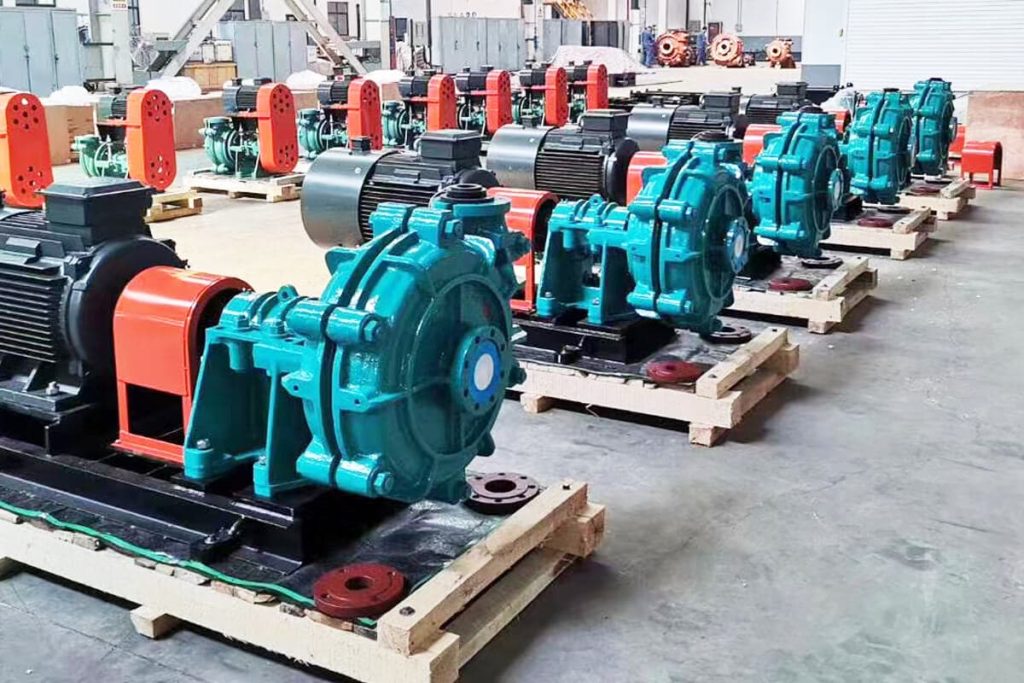Immediately Solve These Slurry Pump Common Faults For You
Slurry pumps play a vital role in mining, construction, wastewater treatment and oil extraction industries. They are used for conveying abrasive and corrosive fluids containing solid particles, etc. However, like any other mechanical equipment, slurry pumps can fail and not perform optimally. Failure of a slurry pump can lead to significant downtime and lost production. It can also lead to increased maintenance costs, reduced efficiency, and even safety concerns. Among others, mud pump failures can occur due to various reasons such as wear, corrosion, cavitation and mechanical issues. We will discuss the most common failures and provide effective advice to help the industry minimize downtime while maximizing efficiency.
About Slurry Pumps
Slurry pumps are essential equipment in many industries, including mining, oil and gas, and wastewater treatment. These pumps are vital in moving abrasive slurries from one location to another. The role of the slurry pump is to transport these fluids containing solid particles or solid-liquid mixtures. They are designed to move water-containing solids efficiently without clogging or rapid wear.

Although slurry pumps are designed to be durable and efficient, the abrasive material being transported can cause severe damage to conventional pumps. The impellers, liners, casings, shafts and bearings of slurry pumps are subject to high levels of wear due to the constant movement of abrasive fluids, resulting in downtime and lost productivity. To prevent the failure of the slurry pump, it is important to understand the malfunction and take the necessary steps to avoid it.
Common Faults Of Slurry Pump
1. The Slurry Pump Stuffing Box And Shaft Not Concentric
The main reason for this phenomenon is processing errors, uneven gaps caused by aging, or incorrect installation. When the eccentricity is too large, the size of the ring is uneven, the inside and outside are not concentric, the packing is not uniform, the wear is inconsistent, and the material will eventually leak. It is also possible that the shaft is bent and deformed for some reason, or the hole is aging or the bearing position is aging, depending on the specific conditions of the equipment.
The main reason:
- The steering of the drive motor does not match the steering of the slurry pump.
- The suction pipe has a certain degree of blockage, which will also decrease flow and head.
- The problem with the pump is that the impeller is reversed. Or the flow path of the impeller is severely blocked, and the sealing ring or gasket has a small amount of air leakage.
- Serious cavitation occurs. That is, the geometric installation height of the slurry pump needs to be lowered, or the resistance loss in the suction pipeline needs to be smaller, which will also cause insufficient flow and lift.
- The suction pipeline system includes pipelines, joints, valve sealing packing, suction guiding pipes, negative pressure instruments, etc. If there is a small amount of air leakage, the flow and head will also be reduced.
Solution:
- Care should be taken to check whether the installation is correct after installation.
- If the sealing water ring is severely worn, replace it with a new one.
- If the sealing clean water pipe is blocked, the sealing water cannot enter the middle of the packing, which will cause the filler to wear quickly and cause material leakage. The blocked water pipes should be dredged to keep the sealing water clean.
2. Head Of Slurry Pumps Reduce
(1) The flow channel of the impeller is blocked
If part of the flow channel of the impeller is blocked, it will affect the work of the impeller and cause the outlet pressure to drop. Therefore, it is necessary to dismantle the pump to check and remove foreign matter.
Solution: To prevent this problem from recurring, a filtering device can be added before the pump inlet if necessary.
(2) Internal leakage occurs
When the gap between the rotating and stationary parts in the pump exceeds the design range, it will cause internal leakage. The discharge pressure of the pump drops, such as the gap between the impeller ring and between the stages of the multi-stage pump.
Solution: At this time, corresponding dismantling and inspection should be carried out to repair or replace the parts that cause the excessive gap.
(3) Cavitation occurs at the inlet
If the suction port pressure of the pump is too low, lower than the saturated vapor pressure of the pumped medium, cavitation will form.
Solution: At this time, check whether the inlet piping system is blocked or the opening of the inlet valve is too small, or increase the liquid level of the suction pool.
(4) Speed reduction
The impeller’s outer diameter and the pump’s speed are important factors affecting the pump head. When other conditions remain unchanged, the head of the pump is proportional to the square of the speed. Sometimes the speed of the pump is reduced due to some external reason, and the head of the pump will be reduced accordingly.
Solution: The speed of the pump should be checked. The reason should be checked and solved reasonably if the speed is insufficient.
(5) The operating point shifts to high flow and low lift
In general, centrifugal pumps have a continuous downward performance curve, and the flow rate gradually increases with the decrease of the head. Due to some reason, the back pressure of the pump decreases, and the working point of the pump passively shifts to the end of low charge and large flow along with the curve of the device, which will cause the head to decrease. This is caused by external factors such as changes in the machine and has nothing to do with the pump itself.
Solution: At this time, as long as the back pressure of the pump is increased, such as closing the outlet valve a little, the problem can be solved.
(6) The motor reverses
Due to the wiring, the rotation of the motor will be opposite to the actual rotation required by the pump. In this way, the rotation of the pump should be observed first when starting up.
Solution: You should exchange two wires on the motor terminal if the steering is reversed.
3. Abnormal Vibration Of Slurry Pumps
When the slurry pump has abnormal vibration and noise, the main reasons are:
- Uneven medium density
- Uneven installation of the slurry pump
- The uneven air intake of the suction pipe
- Excessive bearing clearance
Solution: When the pump is turned on normally, the vibration of the pump will disappear. The level of the pump body should be checked during installation and operation. The feeding situation of the pump should be improved, and the uniformity and stability of the intake air should be strengthened. During daily equipment operation, if it is found that the pump shaft and the motor shaft are not concentric or the bearing is damaged, it should be dealt with in time.
Slurry pump falts are a common problem faced by many industries that handle abrasives. By identifying the root cause of a failure, you can take preventive action to avoid downtime and costly repairs. Regular maintenance and monitoring of your pump’s performance will also help extend its life. Remember to monitor and maintain your equipment regularly to prevent future failures. Our pumps are designed to easily handle the toughest challenges of abrasive and viscous materials, ensuring maximum uptime and productivity for our customers. With our years of experience and commitment to quality, Walker has become a trusted supplier of slurry pumps, delivering superior performance and durability. So if you are looking for high-efficiency slurry pumps look at our team. Contact us get the price!
